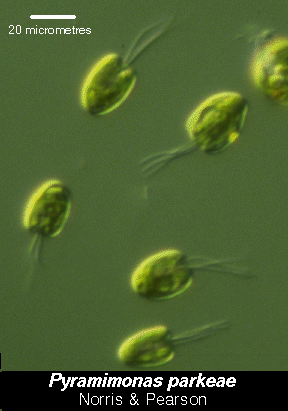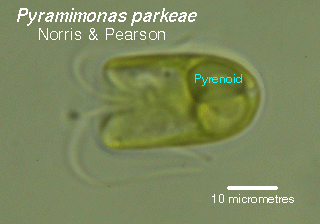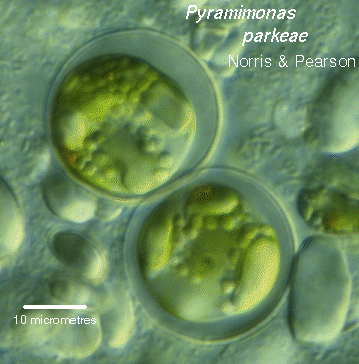
Typically, Pyramimonas cells appear as small planktonic flagellates. Small benthic cysts are known for a few species, mostly from freshwater or tidepool habits.
 |
The flagellate cells may be as little as 5 or as much as 50 micrometers long. The diagnostic shape is a four-lobed pyramid, although the cells are fragile and easily disrupted and therefore this shape may be lost in some preparations. |
 |
Four flagella (eight or even sixteen in a few species) emerge from a pit in the center of the pyramid base. A large chloroplast takes up most of the cell volume, and a large pyrenoid with surrounding starch grains may take up most of the chloroplast volume in the posterior part of the cell. |
 |
Cysts, when present, are formed from single cells and rarely are much larger than the cell from which it formed. A thick wall is present that may or may not be ornamented and does not contain sporopollenin. Cyst rupture releases up to four flagellate cells. |
Return to summary information